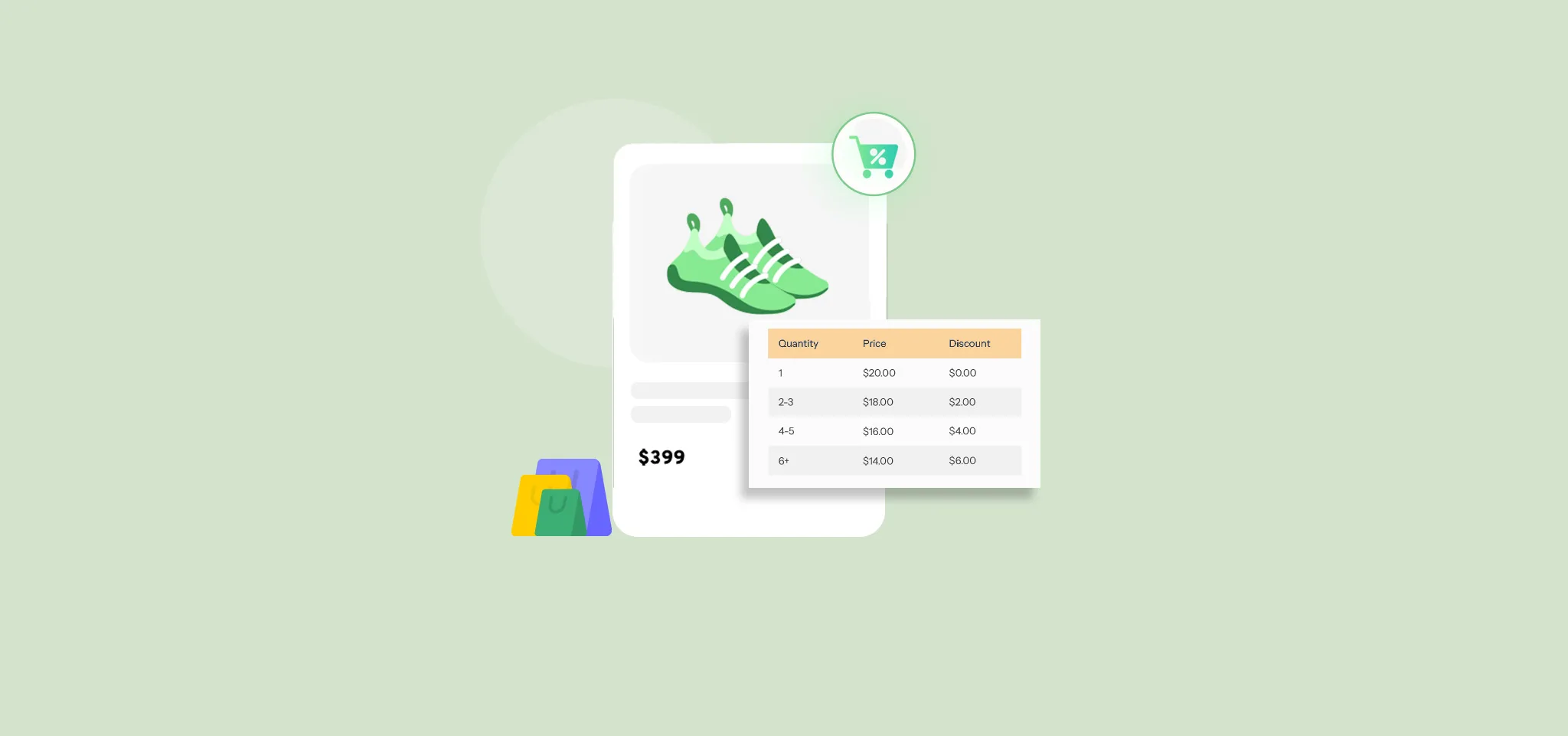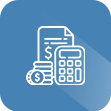Let’s be honest: increasing the amount your customers spend on your Shopify store would make running your business a lot easier. While there’s no guaranteed method to achieve this, there are effective strategies to boost your average order value (AOV) and generate more revenue from each visit.
One powerful method is using discounts strategically, especially with existing customers who are easier to sell to than new ones.
Tiered discounts Shopify can help by offering better deals as customers buy more. This approach leverages psychology: customers feel happier and are motivated to purchase more when they see greater savings.
Understanding Shopify Tiered Pricing
Tiered pricing provides discounts based on the quantity purchased. The more a customer buys, the less they pay per item. This encourages larger orders, which can help increase sales, clear out inventory, and reward loyal customers. Tiered pricing offers Shopify bulk discounts which is especially beneficial for B2B businesses or stores with bulk buyers.
The Need Behind Shopify Tiered Pricing
Why do store owners need to use tiered pricing discounts in their Shopify stores? While Shopify offers various discount options through its built-in discount feature, it doesn’t support tiered pricing directly. This means you can’t set different price levels based on the quantity purchased using Shopify’s original discount tools. Therefore, store owners need third-party solutions that integrate with Shopify to implement tiered pricing. These solutions can provide the flexibility needed to offer tiered discounts Shopify based on the number of items a customer buys, which can boost sales and enhance customer satisfaction.
How to Create Shopify Tiered Pricing Discounts?
Tiered pricing is more than just adjusting prices—it’s about doing it smartly to boost profits while keeping customers happy and maintaining your brand’s reputation. This guide will walk you through setting up dynamic pricing rules and strategies for your Shopify store.
Implementing Shopify Tiered Pricing Discounts to Your Store
Shopify Dynamic Pricing extension is a useful tool for setting up tiered pricing discounts. It lets you offer discounts on specific products based on quantity, individual customers, and customer tags. With this app, you can also hide product prices and the add-to-cart button for certain customer groups and replace them with custom text. Additionally, you can import or export discounts using a CSV file for different customer types like B2B, wholesalers, and more.
Its capabilities extend to:
- Offering discounts on specific products for particular customers and customer tags
- Providing price discounts as fixed amounts or percentages
- Adding discounts based on quantity ranges for bulk or tiered pricing
- Creating custom discount rules or importing them via a CSV file
- Hiding the add-to-cart button and prices for guests or registered customers based on their tags
Price: $6.99/month
Includes: 1 Year of Free Support and Extension Updates
To Set Up Shopify tiered pricing discounts, follow the steps below:
Step 1. Installing Shopify Dynamic Pricing App
Step-by-Step Installation Guide:
- Install and activate the Shopify Dynamic Pricing app from the app store.
- Navigate to the Apps section in the admin panel.
- Begin the configuration process.
Step 2. Configuring the App
Navigate the Admin Panel. Go to the Apps section in your Shopify admin panel and select the Dynamic Pricing app to start setting it up.
Step 3. Creating Tiered Pricing Rules
To create and manage multiple rules for tiered pricing, navigate to Rules > Add Rule. Here, you can configure rule settings by providing the following details:
Adding New Rules:
- Provide a rule title.
- Select all or specific products and collections.
Customizing Tiered Pricing Tables:
Shopify Customer Specific Pricing:
- Choose customers by name to create tier pricing tables.
- Select customer tags to define who gets the discounts.
Defining Discount Types and Values:
- Fixed Discount: A specific amount off.
- Percentage Discount: A percentage off the total price.
- Set the minimum and maximum quantities for the discount to apply.
- Define the quantity range for each discount tier. For example, buy 5-10 items, get a 10% discount; buy 11-20 items, get a 15% discount.
Setting Rule Priority and Dates:
- Start and End Dates: Specify when each rule starts and ends to manage promotions and seasonal sales effectively.
- Priority Settings for Multiple Rules: Set priorities for rules to ensure the most important discounts apply first.
Step 4. General Settings Configuration
After creating a rule to set tiered pricing discounts, navigate to General Settings. Here, you can enable the app and prioritize settings.
Enabling the App: Check the option to enable the app in your store’s settings.
Table Location: Choose where the tiered pricing table appears on product pages.
Priority Settings: Select priority settings for hide price, add to cart button, and discount for products.
Step 5. Hide Price and Add to Cart Options
Next, you can customize visibility based on user selection by specifying which users see hidden prices and buttons based on their tags or customer status.
Replacing Price and Add to Cart Button Text:
- Hide Price: Replace with custom text.
- Hide Add to Cart Button: Replace with custom text or a button with a URL.
Step 6. Importing and Exporting Discounts
In the CSV Prices tab, you can choose to import and export discount rules via CSV files to manage different customer types.
Benefits of Using Shopify Tiered Pricing Discounts
Using tiered pricing discounts in your Shopify store offers several advantages. Here are some key benefits:
Increases Sales Volume: Tiered pricing motivates customers to buy more items to get better prices. This approach can significantly increase the average order value because customers are encouraged to purchase larger quantities to take advantage of discounts.
Boosts Customer Satisfaction: Offering shopify bulk discounts improves customer satisfaction by giving them more options and flexibility. Customers feel they are getting better value for their money, especially when buying in bulk. This can lead to a more positive shopping experience and higher customer retention rates.
Reaches Diverse Customer Segments: Tiered pricing supports shopify customer specific pricing and allows you to cater to different customer segments effectively. Some customers may prefer to buy smaller quantities due to their needs or budget constraints, while others might opt for bulk purchases to save money. This flexibility helps Shopify stores appeal to a wider audience.
Enhances Inventory Management: Tiered pricing can aid in better inventory management by encouraging bulk purchases. This is especially useful for clearing out excess stock or promoting specific products, which can reduce storage costs and improve cash flow.
Choose the Right App for Your Store!
Now that you have all the information and tools you need, it’s time to start using dynamic pricing in your Shopify store. This strategy is not just about keeping up with the e-commerce industry, but also about gaining a competitive edge. As you begin using dynamic pricing in your store, keep these things in mind: Take Action, Stay Ahead of the Competition, and Continuously Improve.
By following the steps highlighted above, you can successfully implement dynamic pricing in your Shopify store and enjoy the numerous benefits it offers.
FAQs
Q. What is tiered pricing in B2B?
Ans. Tiered pricing in B2B (business-to-business) refers to a pricing strategy where the cost of a product or service varies based on the quantity purchased and how often it’s bought. Essentially, customers who buy larger quantities or make frequent purchases receive discounts and better prices. This approach encourages bulk buying and rewards loyal customers with more favorable pricing.
Q. Can I apply tiered pricing to specific customer groups only?
Ans. Yes, using the Shopigy Dynamic Pricing extension, you can create rules for specific customer tags and names.
Q. What are the drawbacks of using tiered pricing?
Ans. While tiered pricing has many advantages, it also comes with some challenges:
- Setting up and managing tiered pricing can be complicated. It requires careful planning to ensure the tiers are correctly defined and applied.
- If the pricing tiers are not clearly communicated, customers may become confused. They need to understand exactly how the pricing works to feel confident in their purchases.
- Offering aggressive discounts can lead to lower profit margins. It’s essential to strike a balance between attracting customers with discounts and maintaining profitability.
- Tiered pricing can complicate inventory management. Businesses must be vigilant to avoid running out of stock or accumulating excess inventory. Effective inventory management is crucial to support a tiered pricing strategy.
Q. What is the difference between tiered pricing and volume pricing?
Ans. Tiered Pricing is the prices per unit change as the quantity purchased increases. For example, customers pay different rates for different quantity ranges, with lower prices for higher quantities. Whereas Volume Pricing is when a single price per unit is set based on the total quantity purchased. All units are priced uniformly according to the total volume of the order.








